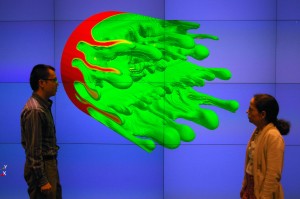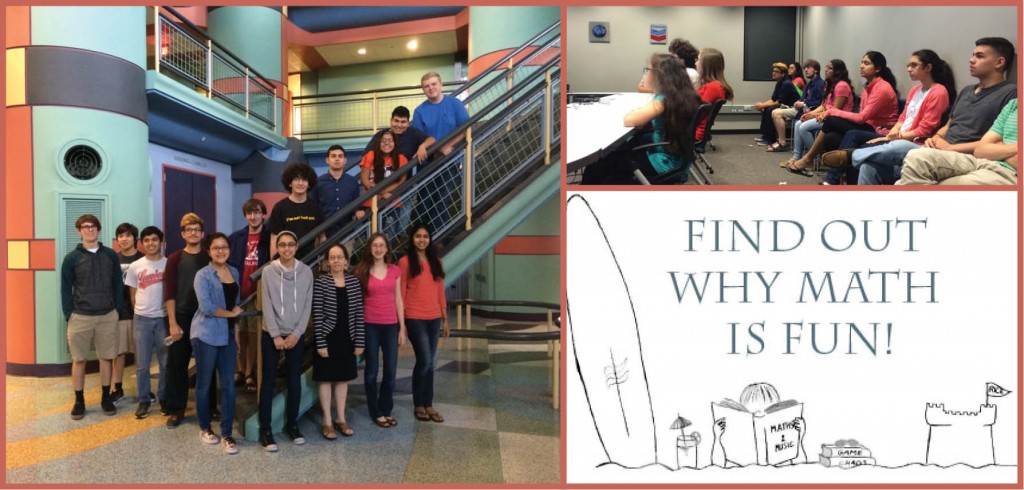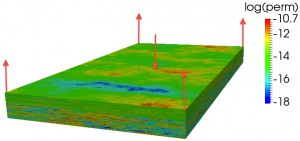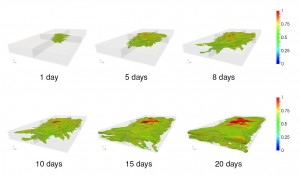
Riviere (right) and former graduate student Jizhou Li (who received his Ph.D. this past May) stand in front of the Chevron Visualization Lab wall displaying a simulation of viscous fingering in enhanced oil recovery processes.
Professor Beatrice Riviere, Noah G. Harding Chair of the Computational and Applied Mathematics Department, deals with data– lots and lots of data. As part of the research group, Computational Optimization and Modeling of Porous Media, she develops state-of-the-art algorithms for modeling and optimizing physical phenomena occurring in porous media, which can have applications in the environment, biomedicine, and the energy industry. For example, the research group analyzes what’s happening underground in order to optimize the retrieval of fossil fuels for the oil and gas industry.
“The other work I do that is also related to porous media is looking at the human body and simulating diffusion and transport of chemical species through tissues and organs,” explains Riviere. “The common denominator is basically similar equations going back to the principles of physics. But either way, there’s a lot of data that we deal with.”
Riviere uses a variety of tools to help make sense of this data including visualization resources available from Office of Information Technology’s Center for Research Computing. She can use her laptop computer to access the Visualization Portal that allows her to harness the power of DAVinCI, which is a high-performance IBM supercomputer with 32 graphics processing units (GPU) designed for visualization applications.
When Riviere and her researchers perform 3D simulations, there are millions of unknowns that they are tracking, such as pressure or concentration. They write and run code in parallel but then they have to run a post-process to get visible and meaningful results. Sometimes they try to look at an entire simulation data set as it evolves over time. For example, they might do a simulation over 300 days to see the flow of chemical components traveling into the rocks. Then, they need some powerful tools to make sense of the images. For instance, it might be important to zoom in on a particular well to better understand its role in the overall process.
To do this, they do not have to physically go to Rice’s Visualization Lab but can use their computers to access the visualization portal and harness DAVinCI’s power and then display the results on their laptops. Using ParaView software, which was designed to analyze large data sets, they can view and manipulate the images.
While most of Riviere’s work is done remotely using the Visualization Portal, she occasionally visits the Chevron Visualization Lab in Dell Butcher Hall because “it is cooler to see it on the big screen.” This summer she took the high school students from her summer math camp program to the Visualization Lab to experience the 14 feet by 8 feet display wall.
Members of the Rice community can contact the Center for Research Computing to discuss their big data visualization needs.

Young Summer Math Days is a week-long educational program organized by Riviere for high school juniors and seniors and is conducted on campus by volunteer faculty and graduate students. Students are exposed to a variety of ways mathematics can be used in art, car racing, modeling in biology, parallel computing, knots, and more. According to Riviere, the purpose of the camp is “to open their minds to what you can do with a math degree.”



